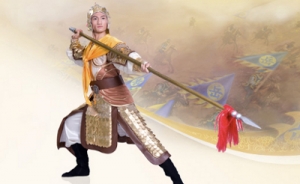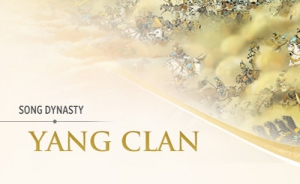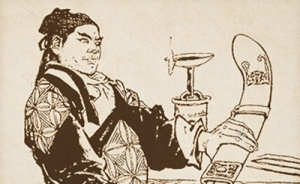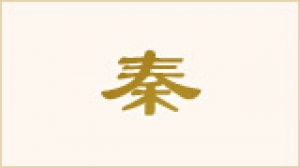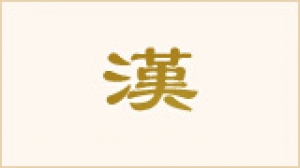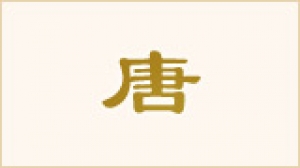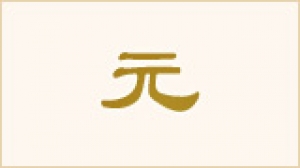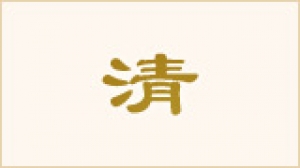The Song Dynasty
The Song dynasty lasted over 300 years (960–1279 C.E.), though its reign is divided into the Northern Song (960–1127) and Southern Song (1127–1279) periods. Like its Tang dynasty predecessor, the Song dynasty is viewed as a golden era of Chinese civilization, a period of important advancements in literature, philosophy, and science. Many aspects of life often associated with traditional China—including cultivation of rice, sophisticated civil service examinations, and groundbreaking technological innovation—advanced during the Song.
The Tang dynasty’s demise was followed by 53 years of turmoil and warfare, a period historians refer to as the “Five Dynasties and Ten Kingdoms.” In 960, Zhao Kuangyin and his brother united China’s central plains and southeast regions. They established the Song dynasty and Zhao became emperor under the name Taizu. He oversaw the expansion of the civil service examination system and an elaborate mapping project covering all provinces and cities.
The Northern Song era that he began was also marked by periodic battles with neighboring kingdoms and nationalities. This culminated with the Jurchens, a tribe within the nearby Liao dynasty, invading Song territory and conquering the capital city of Kaifeng in 1127. They also captured Emperor Qinzong and his father Huizong, along with much of the royal court. The military defeat was later labeled the “Humiliation of Jingkang.”
But Huizong’s son Zhao Goudu escaped and crossed the Yangtze River to found the Southern Song dynasty in what is modern day Hangzhou in Zhejiang province. The next century and a half saw economic, religious, and social life flourish.
The Song is known as the most economically prosperous dynasty in Chinese history. During its reign, China was transformed from an agrarian to a commercial economy and its population increased dramatically. In addition to urbanization and the growth of a merchant class, government policies granting farmers ownership of land proved a huge success. A jump in agricultural production ensued—even the later Ming and Qing dynasties failed to surpass the Song’s yield.
Technology developed rapidly as well. Three of the “Four Great Inventions” of ancient China originated in the Song dynasty: the magnetic compass, printing, and gunpowder. Firearms began to be widely used during military combat and ship building dramatically improved. To protect its growing foreign trade, the Song dynasty established China’s first permanent navy. Printing, papermaking, silk production, and porcelain crafts all thrived. In the 12th century, the Song became the first government in the world to print its own paper currency.
Song rulers were comparatively flexible in their style of governance. The scholar-official class enjoyed an unprecedented rise in social status and carried much of the responsibility for local administration. The prosperous economy, freedom of expression, and the invention of printing provided scholars with an environment to freely contemplate, debate, and propagate their thought.
Several figures are particularly associated with the Song dynasty’s achievements:
-
The Poet Su Shi (1037–1101): Su Shi was a leading writer, poet, and statesman of the Song era. He was a master of ci poetry, one of the pillars of Chinese literature that reached its peak during the dynasty. Over 4,000 of his poems—known for their bold, expressive, and passionate style—have been preserved. Many Chinese can still recite some of them today.
-
The General Yue Fei (1103–1142): Yue Fei was a military general known for defending the Southern Song against continued Jurchen invasions. He is widely seen as a national hero and symbol of loyalty. One of Shen Yun’s most popular dances, “The Loyalty of Yue Fei,” relays the legend of how he resolved the dilemma of being torn between defending his country and staying home to care for his elderly mother.
Characters from Outlaws of the Marsh: The novel is one of China’s four literary classics, and many of its characters and tales are based on historical figures from the Song dynasty. Shen Yun’s dance numbers “Wu Song Battles the Tiger” and “The Heroic Lu Zhishen” are drawn from this novel.
Unlike other eras, the Song dynasty was not plagued by separatist rebellions, eunuch plotting, or royal family infighting. But eventually Genghis Khan’s grandson Kublai Khan defeated the Southern Song dynasty in 1279.
July 12, 2011


